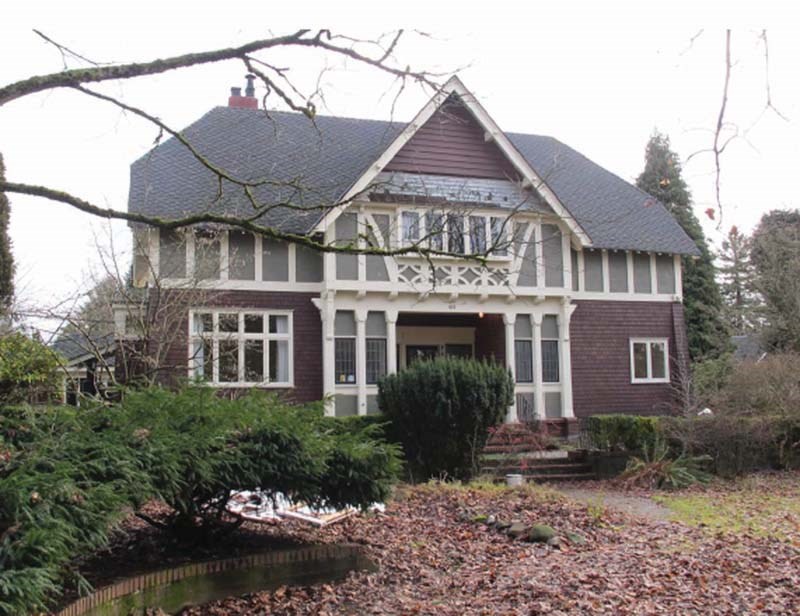A heritage house is saved but the neighbourhood is imperilled.
That seemed to be the consensus among a disappointed Grand Boulevard contingent after City of North Vancouver council unanimously approved a three-lot subdivision in order to protect the 107-year-old Tudor Revival-style Haswell home at 910 Grand Blvd.
Neighbour Warren Ash accused the developer of using the Haswell house “as a hostage,” and called for a two-lot solution.
Ash also blasted the prospect of two smaller lots fronting East Ninth Street, which he said amounted to a “massive increase in density” that would compound parking problems.
While she lamented neighbourhood strife, North Shore Heritage Preservation Society vice-president Jennifer Clay warned that the Haswell house could be demolished to make way for two imposing homes with minimal setbacks.
“Given this dismal alternative … the proposal in front of us tonight is preferred.”
The debate displayed a split among the community with one speaker elucidating concerns that the development would transform the street into “mini-boulevard” while another neighbour suggested the rejection of the developer’s proposal would result in housing monstrosities.
But while the gallery was divided, council was united.
Coun. Don Bell underlined his reluctance to support the development but said his decision hinged on one question: “What is the biggest threat to continuing erosion of the character of the neighbourhood?”
Ultimately, Bell decided a three-lot development was worth supporting in order to save the Haswell house.
“This is retaining a grand old dame on Grand Boulevard,” said Coun. Linda Buchanan.
With widths of 33 and 38 feet, the two East Ninth Street lots may be slightly more affordable than what would have otherwise been built, according to Buchanan.
Coun. Holly Back agreed, suggesting the lots offer “great starter homes.”
The two new houses are expected to have square footages of 1,783 and 1,976 with a floor space ratio of 0.5, which measures total floor space against lot size.
While she defined herself as “not a real heritage person,” Back said she was swayed by the Haswell home.
“I would like to see that grand mansion saved,” she said.
Mayor Darrell Mussatto agreed.
“Keeping those large, stately homes on Grand Boulevard is the way to go,” he said.
The Haswell house is slated to be put on a new foundation with a fully finished basement.
While he supported maintaining the Haswell home “for generations to come,” North Shore Heritage Preservation Society president Peter Miller allowed he would have preferred the house to remain on its large lot.
However, that likely wasn’t practical, according to Coun. Pam Bookham.
“I’m not sure that it’s realistic to think that amount of land can be preserved around a home like this in perpetuity,” she said.
Bookham said she was also persuaded to support the three-lot subdivision after investigating the onerous process of preserving the Haswell house, which involves costly seismic upgrades, as well as work to modernize the insulation, plumbing and heating.
After initially mulling a development that could have included six units, Coun. Rod Clark suggested a caveat barring the centre home from having a secondary suite, bringing the total number of units to five.
The idea won support from council.
“In terms of the massing, I think it fits with the neighbourhood. In fact, you could have a lot worse,” noted Coun. Craig Keating.
The Haswell house was built in 1910 for timber dealer Eliot Arthur Alexander Haswell. The city cites the house as being representative of the first wave of development on Grand Boulevard and portraying “prominence and grandeur.”



